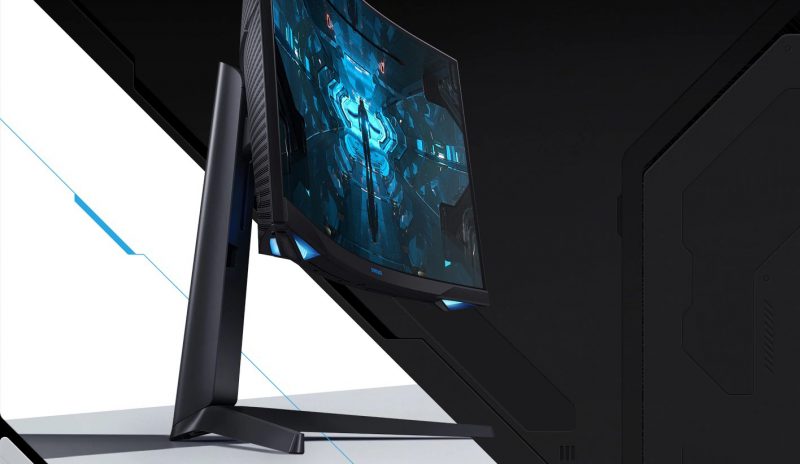


I have firmware version 1010.3, which has been here since I bought the monitor about a month ago, but the monitor refuses to flash older firmware, I tried it because allegedly inverse ghosting should not be present with older firmware than version 1009.3. I've also tried different versions of the GPU driver.īut it's not really a graphics card or HW, because other users on write with exactly the same problem in the context of G-sync and nvidia. It is then recognizable when moving the mouse and aiming quite vigorously.Įven here prematurely in the hope that it needs a weak GPU (RX 570 at the time), bought an RX 6700 XT for 18,000, formatted the SDD, did a fresh-install OS, updated all drivers, including the OS, but let me set up Radeon software, OSD monitor and wherever and whatever, it's still the same problem. The VRR function simply changes the behavior of FreeSync, it is not as smooth and in some games slower emotionally, as I mentioned here. In some games I didn't even know the difference (Borderlands 1), but in some it was much worse (Borderlans: Presequel, Aliens: Colonial Marines. Although the VRR function inverses / returns the inverse ghosting to the default value of the monitor, such as it has without FreeSync activated, it comes with tear-smoothness-stuttering, although surprisingly in some games not as big as when I played with CRU utilities. I didn't expect that i will face these kind of problems at the 660 EURO monitor. If I set the FreeSync range below the value of the monitor frequency even by only 1 unit, the inverse ghosting / overshoot disappears but the image tears again. If I overclock the monitor to 250 hz and increase the range of FreeSync to 250, then inverse ghosting is even if I reach frames per second up to 250 fps, which is not the case with default 240hz / 240fps (overshoot is minimal). So I probably confused it somehow, so in short, the system somehow took it as something in between and got both here, ie a little less inverse ghosting, but with tearing (non-smoothness). I managed to achieve that I had half Inverse ghosting and half stuttering, when if I remember correctly I had the FreeSync range set to 240 and the monitor frequency to 240.495 via CRU (custom resolution utility), just because either OS, GPU or the monitor rounds the value to 240,500 to 241, where it is already stuttering. I tried the impossible with various modifications like in Radeon software, monitor settings or with CRU utility where I tried to change the range and values of the FreeSync range, or overclock the monitor, but I either have extreme inverse ghosting (usually from 100 - 200 FPS) or stuttering. I also know this from that a lot of other G7 owners have the same and I have the latest firmware 1010.3 There is a solution to turn on the VRR (variable refresh rate) function in the OSD monitor, which returns the inverse ghostin to the stable minimum value as without FreeSync, but another defect occurs, namely microstuttering and also that FreeSync simply does not work as it should (as without VRR) -butter knife, emotionally it's like I played without FreeSync (in some games it's like I played at 144 HZ instead of 244 HZ). But the less FPS the graphics card reaches, the greater the inverse ghosting, so when I play at 100-120 FPS, for example, this defect is extreme, as in the link to the video and the game is practically unplayable, it really interferes and annoys to see for example figures, rather around figures or objects with a white glow (even at a value of 200 FPS at 240 HZ, the defect is quite visible, really only from about 220-240 FPS is minimal and practically invisible if I do not focus on it.
Samsung odyssey g7 32 software#
This is a defect called Inverse ghosting / overshoot, a phenomenon that looks like a white glow behind moving objects (see the link to below), which this monitor has even without the FreeSync turned on, where no matter what range of the frame it is, it is this defect is minimal.īut when I turn on FreeSync in both the OSD monitor and the Radeon software, the situation changes: I usually use the FPS limiter directly in the Adrenaline software (Radeon software), when I play with FPS lock 1 FPS after the monitor frequency limit, so in the case of 240 HZ I have lock on 239 FPS- I found out that if the frames reach this value, resp. I bought a Samsung Odyssey G7 monitor (32 inches) from you and I have a problem I can't handle.
Samsung odyssey g7 32 tv#
Since I didn't find the Monitors section anywhere in the forum selection, I entered the nearest TV forum here.


 0 kommentar(er)
0 kommentar(er)
